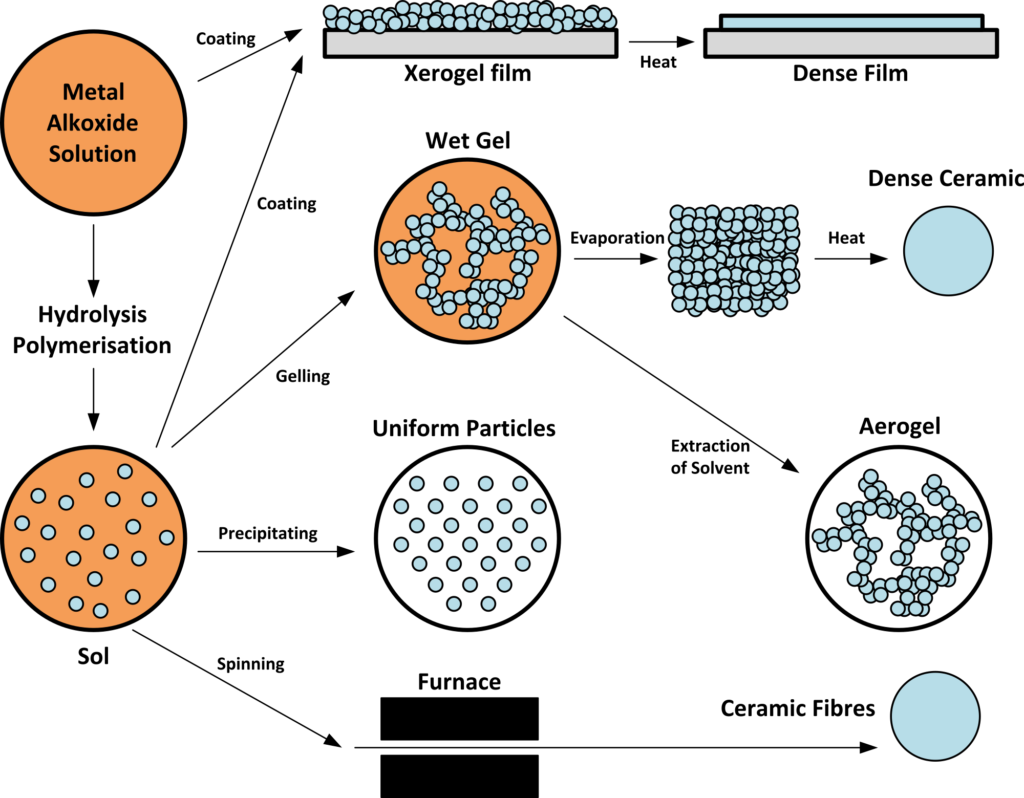Easy read on Sol gel Technique in 2021
Know in detail about the technique sol gel technique and its advantages
Sol gel method is a type of chemical solution deposition technique or a wet chemical route for the synthesis of colloidal dispersions of oxides – altered to powders, fibres, thin-film sand monoliths. Sol-gel coating is a process of preparation of single or multi-component oxide coating which may be glass, ceramic or crystalline ceramic depending on the process. Also, the nanomaterials used in modern ceramic and device technology require high purity and facilitate control over composition and structure.
The sol-gel method used recently in the fields of materials science and ceramic engineering and these methods is used primarily for the fabrication of materials (typically a metal oxide) starting from a chemical solution which acts as the precursor for an integrated network (or gel) of either discrete particles or network polymers. Typical precursors are metal alkoxides and metal chlorides, which undergo various forms of hydrolysis and polycondensation reactions.
The formation of a metal oxide involves connecting the metal centres with oxo (M-O-M) or hydroxo (M-OH-M) bridges, therefore generating metal-oxo or metal-hydroxo polymers in solution. Thus, the sol evolves towards the formation of a gel-like diphasic system containing both a liquid phase and solid phase whose morphologies range from discrete particles to continuous polymer networks.

The precursor sol can be either deposited on a substrate to form a film, cast into a suitable container with the desired shape, or used to synthesize powders. The sol-gel approach is a cheap and low-temperature technique that allows for excellent control of the product’s chemical composition. Even small quantities of dopants, such as organic dyes and rare earth elements, can be introduced in the sol and end up uniformly dispersed in the final product.
It is used in ceramic processing and manufacturing as an investment casting material, or as a means of producing very thin films of metal oxides for various purposes. Sol-gel derived materials have diverse applications in optics, electronics, energy, space, biosensors, medicine, reactive material and separation technology.
Advantages of Sol-gel Technique
The sol-gel coating is one of the interesting methods because it has many advantages. Examples are as the followings
- The chemical reactants for the sol-gel process can be conveniently purified by distillation and crystallization.
- All starting materials are mixed at the molecular level in the solution so that a high degree of homogeneity of films can be expected.
- The trace elements in the form of organometallic compounds or soluble organic or inorganic salts can be added to adjust the microstructure or to improve the structural, optical, and electrical properties of oxide films.
- The viscosity, surface tension and concentration of a solution can be easily adjusted.
- Large area films of desired composition and thickness can be formed on a complex geometry substrate.
- It facilitates to the formation of films of complex oxides and eases to control the composition and microstructure of the deposited films.
- Sol-gel coating is exclusively applied for the fabrication of transparent layers with a high degree of planarity and surface quality.
Now that you have read about Sol Gel Technique. Check out our course on Ampersand Academy Read this interesting article about Thin Film Deposition.